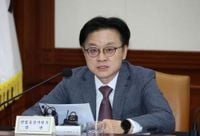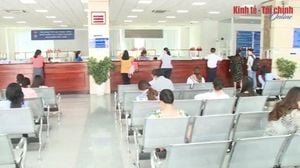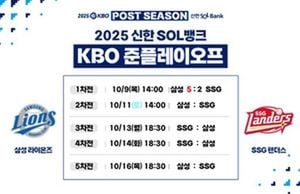On September 19, 2025, South Korea’s steel industry found itself at the center of urgent government action and industry-wide concern, as a fresh round of U.S. tariffs sent shockwaves through export-driven companies and policymakers alike. The day saw a flurry of high-level meetings, policy announcements, and candid discussions between government officials and industry leaders, all aimed at safeguarding one of the nation’s most critical economic sectors.
The backdrop to these developments is stark. According to Yonhap News Agency, the U.S. administration had recently doubled down on its protectionist stance, first imposing 25 percent tariffs on steel and aluminum imports and, in June, raising them to a staggering 50 percent. This move, made without exceptions or exemptions, left South Korean steelmakers reeling. Exports tumbled more than 25 percent year-on-year in July 2025, a dramatic drop that underscored the severity of the challenge facing the industry.
Recognizing the urgency, Korea SMEs and Startups Agency (KOSME) convened an on-site roundtable at Seoul’s President Hotel. The event, titled "Field roundtable to respond to the global trade environment for export-driven small but strong companies," brought together around 30 representatives of small and midsize exporters, including KOSME Chairman Kang Seok-jin and Korea Association of Global CEOs President Seo Dong-man. The timing was no coincidence: it came about a month after the U.S. tariffs took effect, and the mood was one of both anxiety and resolve.
During the roundtable, participants laid bare the difficulties they were facing. Chief among them were decreased sales due to weakened price competitiveness in the U.S. market, confusion over which products were subject to the new tariffs, and instability in business relationships as buyers renegotiated prices or reduced orders. As KOSME reported, these challenges were not just theoretical—they were already having a tangible impact on the bottom line for many exporters.
"The Korea Association of Global CEOs will work closely with the government and related agencies to seek joint response measures and pool capabilities to overcome the crisis," said Association President Seo Dong-man, echoing the sense of collective responsibility that permeated the meeting. The calls for help were clear: companies needed stronger policy support to ease management burdens, including reductions in logistics costs and expanded export financing.
KOSME Chairman Kang Seok-jin responded in kind. "KOSME will actively reflect voices from the field and strengthen practical support, such as resolving logistics and financing difficulties and diversifying markets," he pledged. "We also expect export-driven small but strong companies to actively cooperate with government policies so we can overcome the crisis together." The message was one of partnership—government and industry standing shoulder to shoulder in the face of external pressures.
But the government’s response didn’t stop at words. In Pohang, a city designated as a preemptive industrial crisis response area, Minister of Trade, Industry and Energy Kim Jung-kwan unveiled a suite of bold measures. Chief among them was the introduction of a new "Steel Export Supply Chain Enhancement Guarantee Product" worth approximately 400 billion won (about US$290 million), designed to shore up the industry’s supply chains and bolster its competitiveness in the global market.
"The government, steelmakers, financial institutions and policy lenders will work together to create a guaranteed scheme to strengthen the steel industry's supply chains," Minister Kim announced, as reported by Yonhap. The economic effect of this initiative, he noted, would be equivalent to about 400 billion won in support—a significant lifeline for companies battered by the tariff storm.
Minister Kim’s visit to Pohang also included an inspection of the No. 2 blast furnace at the POSCO steel mill and a stop at the Hydrogen-based Steelmaking Development Center. There, he emphasized the importance of worker safety as the foundation of industrial competitiveness—a reminder that the industry’s future depends not just on financial support, but also on innovation and responsible management.
And innovation is clearly on the agenda. The government revealed plans to launch the world’s first full-scale demonstration project for hydrogen-based steelmaking—a technology that promises to dramatically enhance the "green competitiveness" of Korea’s steel sector. From 2026 to 2030, a total of 810 billion won will be invested in this project, signaling a long-term commitment to both environmental sustainability and economic resilience.
"We will actively support process innovation based on AI and the transition to low-carbon, high value-added products," Minister Kim stated, as reported by The Asia Business Daily. He outlined a comprehensive vision: integrating artificial intelligence to boost production efficiency and safety, providing incentives for low-carbon and special carbon steels, and maintaining close communication with industry players to develop item-specific strategies against oversupply and unfair imports.
Minister Kim was candid about the challenges on the diplomatic front. "We strongly demanded an exemption from steel tariffs during negotiations with the United States, but it was not easy to achieve," he admitted, asking for the industry’s understanding. However, he assured stakeholders that talks with Washington would continue, alongside efforts to defend against circumvention and dumping by foreign competitors.
Beyond immediate crisis management, the government is also focused on legislative solutions. Minister Kim highlighted ongoing work with the National Assembly to enact the Special Act on the Steel Industry, which would help institutionalize key policy tasks and provide a firmer legal foundation for future interventions. The Ministry of Trade, Industry and Energy, for its part, has been coordinating with experts and industry representatives through the "Steel Industry Competitiveness Enhancement Task Force" since January. The outcome of these discussions—a comprehensive "Steel Industry Advancement Plan"—is expected to be announced soon, addressing everything from global oversupply to the promotion of high value-added, low-carbon products and the strengthening of safety and win-win cooperation.
For many in the industry, these measures represent a critical, if not exhaustive, response. The pain of plummeting exports and squeezed margins is real, and the path ahead is far from certain. Yet, the day’s events made one thing clear: South Korea’s steel sector is not facing this crisis alone. With government, industry, and financial institutions pulling together—and with an eye firmly on both immediate relief and long-term transformation—the country is determined to weather the storm and emerge stronger on the other side.
The steel industry’s future may be uncertain, but its resolve is unmistakable. As the dust settles, all eyes will be on how swiftly and effectively these new policies are implemented—and whether they can truly turn the tide for one of Korea’s most vital industries.




